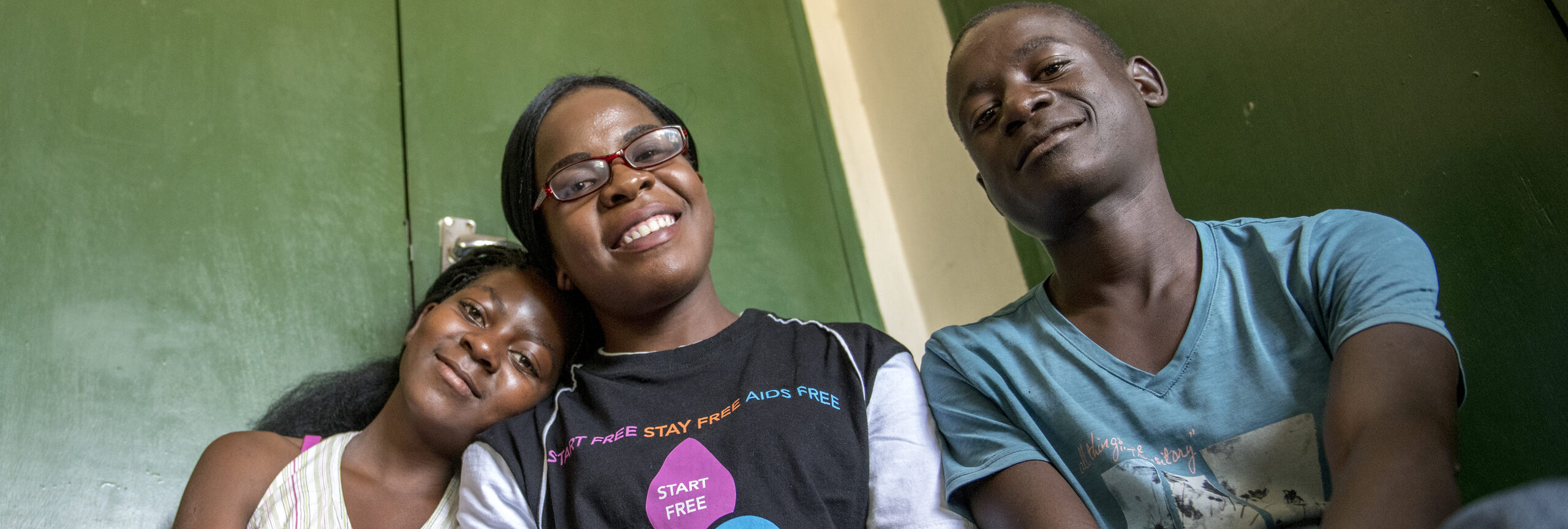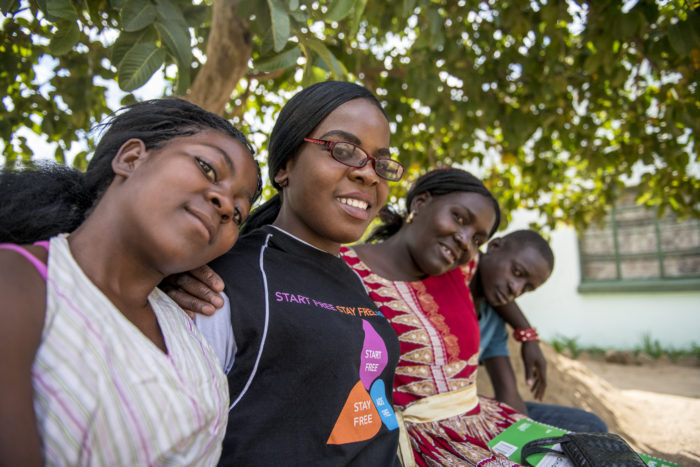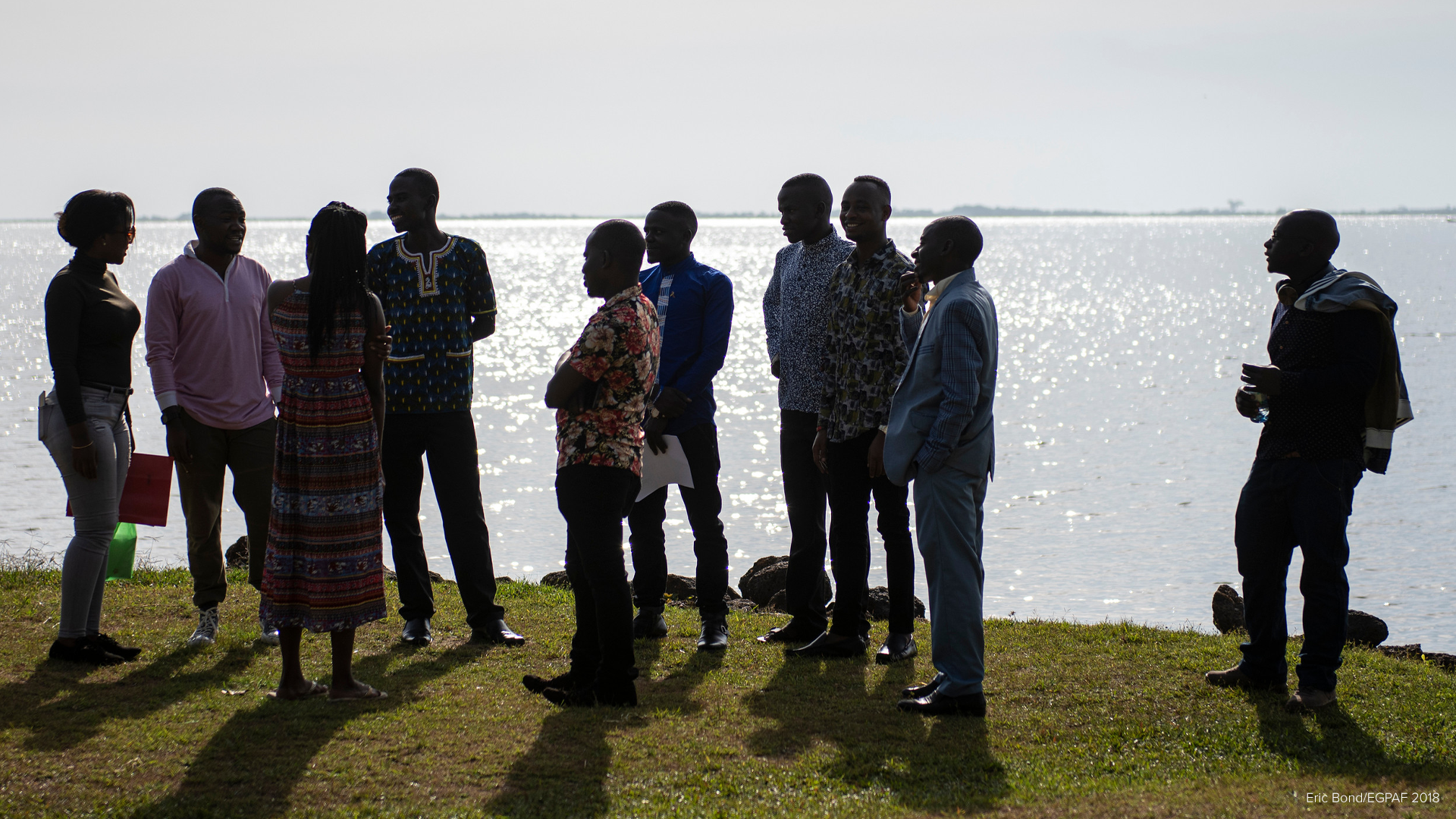
As a young child, Rosa Mahlasera faced a string of heartbreaking losses. In 2004, when Rosa was 6 years old, her younger brother died from chronic diarrhea. The following month her 2-year-old sister died after a prolonged illness. One year later, Rosa’s father died of tuberculosis (TB). All of these deaths were almost certainly AIDS-related. Rosa was left with one healthy older brother and a mother infected with HIV.
HIV prevalence peaked in Zimbabwe in the late 1990s, with more than one-quarter of adults infected with the virus. At that time, more than 700 people a week were dying of AIDS-related causes. 2004 marked a turning point because that was the year that antiretroviral treatment (ART) was finally made available in Zimbabwe. ART saved the life of Rosa’s mother—who is alive and healthy today.
But young Rosa, like many in her community, was haunted by the AIDS-related deaths of family members. Her fears were magnified when she was 12 years old and became ill with frequent fevers. The nurses at her health center suspected malaria, but that test came back negative. Then they asked Rosa to be tested for HIV. The result was positive.
“When the counselor told me that I was HIV-positive, I could not take it,” says Rosa. “I cried very, very much because I thought I was going to die. I just cried and cried until also my mother was crying.
“Then we went to the nurse and the nurse gave me the medication and I was treated. On our way back home, I started crying again. I said, ‘Mommy, don’t tell my brother that I am HIV-positive. He might go and tell his friends and they might laugh at me or stigmatize me.’”
Rosa decided to keep her HIV status a secret. She would lie to her brother and say that she was visiting a friend, when she was actually visiting the health center for treatment.
“Each time I came to the clinic, the moment I saw the nurses, I just started crying because I thought that I was going to die like my siblings and my father.
The community adolescent treatment supporters welcomed me and invited me to a support group.
“Then this one day I came for my health review, and the nurse told me that there were CATS [community adolescent treatment supporters] at the clinic. The CATS welcomed me and invited me to a support group.”
Rosa sat in the psychosocial group with a dozen healthy adolescents, but she remained skeptical: “I told the counselors, ‘No, you are lying. Those people are not HIV-positive.’ I told one counselor that I was very depressed. I told her, ‘Let me die.’
“She said, ‘Come back to the clinic tomorrow, and I will show you my [health] card and my [antiretroviral] tablets so that you will really see that I am actually HIV-positive. In the morning, I went to the clinic and I saw. That’s when I saw how beautiful she is, and I started to accept my status.
“I said, I want to be a CATS like you, so I can motivate others—so that people will know that they are not alone in the world.”
So at age 18, Rosa was trained as a community adolescent treatment supporter by Africaid a community-based organization in Zimbabwe that partners with the Elizabeth Glaser Pediatric AIDS Foundation (EGPAF). She refers to her Africaid supervisors as her aunties.
“My aunties said to me, ‘Rosa, the clinic where you will be placed is in Rutsanana—in your community, where you were tested. What if you see your relatives your friends?’
“I said, ‘I don’t even care [about people knowing my HIV status]. I care about my health.’”
Every child needs support. If they do not get support, they will think that they are alone and feel stigmatized. And they will not adhere to medication.
Rosa eventually disclosed her HIV status to her brother. “He was very hurt, and he cried. I said, ‘It’s OK. I am empowered’.” Rosa persuaded her brother to be tested for HIV. The result was negative. Then Rosa counseled him on safe sex practices.
“My mother was very happy that I had accepted my status and was no longer having suicidal thoughts.”
As a community adolescent treatment supporter, Rosa visits young people living with HIV in their homes; she facilitates support groups and assists at the clinic. Like her own counselor mentor, Rosa believes that she is in a unique position to help her peers.
“I saw that so many young people are not accepting their HIV status because they think that they are going to die. I tell them my story so that it will motivate them that they are not alone in the world. Eventually, I see myself as a senior counselor, giving hope to the hopeless,” says Rosa.
Zimbabwe continues to have a high prevalence of HIV—at currently 13 percent of the adult population. But now people are living with HIV rather than dying. Eighty-five percent of the population is aware of their HIV status and 95 percent of those who know that they are HIV-positive are on HIV treatment.
Community-based organizations like Africaid and young activists like Rosa Mahlasera are working with EGPAF to ensure that children and adolescents are tested and that they adhere to treatment if they are HIV-positive.
“Every child needs support,” says Rosa. “If they do not get support, they will think that they are alone and feel stigmatized. And they will not adhere to medication.
“I see a day when there is no AIDS in Zimbabwe—if we keep giving support.”
So many young people are not accepting their HIV status because they think that they are going to die. I tell my story so that it will motivate them.








